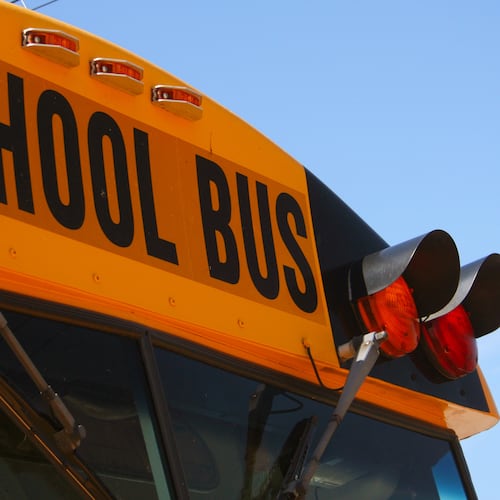SAVANNAH ― Talk about the water supply in Savannah and you’ll hear of a glass half empty — and getting emptier.
At least until International Paper shutters its cardboard mill later this month.
The mill is by far Savannah’s thirstiest operation, consuming about 40% of the local freshwater draw. International Paper’s 24 million gallons a day rival the 27 million gallons the city of Savannah water utility uses to sustain other residences and businesses within the city, six neighboring municipalities and parts of unincorporated Chatham County.
The mill’s unexpected closure, announced in late August, hasn’t changed the narrative to that of a glass half full, though. Another water-guzzling industrial operator could purchase and redevelop the 450-acre mill site and Savannah remains among the Southeast’s fastest-growing regions, creating ever-increasing water demand.
That’s why government and economic development officials say they will move forward with Savannah’s planned $502 million water system expansion backed by Gov. Brian Kemp and the General Assembly.
The plans include a new water intake facility on the Savannah River, the modernization and expansion of Savannah’s aging water treatment plant and the building of the region’s second large-scale surface water treatment plant in Effingham County. Effingham currently draws 4 million gallons a day from Savannah.
The expansion plans also include the drilling of four new groundwater wells in nearby Bulloch County to supply the Hyundai electric vehicle factory that opened last October. The first of those four wells is to begin pumping next month and all four are expected to be operational by March 2026.
International Paper’s water is a big drop in Savannah’s bucket, but not so big as to end the quest for a larger bucket, officials said.
“We’re going to need water as our community continues to grow and more businesses open and relocate here,” Savannah Mayor Van Johnson said. “We want to make sure that we are prepared, and that involves us being intentional but also holistic in our plan and not in a place where we are dealing with a change to one particular item in the ecosystem.”
Credit: Sarah Peacock
Credit: Sarah Peacock
Why do paper mills use so much water?
Fresh water is a primary ingredient in paper-making, as it easily bonds with cellulose fibers from wood. Coastal Georgia has been an industry epicenter for nearly a century because it sits above a billion-gallon-plus water source, the Floridan aquifer.
The soon-to-close Savannah mill was the first large-scale operator to open in the region. Others followed, including paper-product makers in Port Wentworth, Rincon, Riceboro, Brunswick, Jesup and St. Marys.
All drank heavily from the aquifer. The Savannah mill currently pulls 11.4 million gallons a day from the natural underground reservoir and buys another 12.8 million gallons of treated river water from the city of Savannah. Other mills are even thirstier. The Rayonier mill in Jesup and the Brunswick cellulose mill consume 60 million gallons and 45 million gallons a day, respectively, from the aquifer.
The Savannah mill, along with most other water users in Savannah’s home county of Chatham and neighboring Bryan and Effingham counties, can’t tap the aquifer in the same way as others along the coast. The Georgia Department of Natural Resources placed caps on aquifer withdrawals for the Savannah area more than a decade ago because of concerns about saltwater intrusion.
Credit: Courtesy of HMGMA
Credit: Courtesy of HMGMA
How is Savannah accessing more water?
With Savannah’s population doubling since the turn of the century and steep growth in manufacturing, headlined by the new Hyundai EV factory, being cut off from the aquifer threw Savannah into a water crisis.
Hyundai’s water needs thrust the shortage into the public consciousness last year.
To meet the EV manufacturing campus demand for more than 4 million gallons a day, officials will drill four aquifer wells just outside the boundaries of the limited-pumping area. Those who work and live near those well sites feared the increased pumping would lower the water table and affect their wells. Hyundai should get its water from somewhere else, they argued.
At the same time, the city of Savannah was finalizing its strategy to add water capacity. Those plans were unveiled last September and called for nearly doubling how much it treats and delivers from the Savannah River, from 55 million gallons a day to 100 million.
Yet that expansion did not include supplying water to Hyundai and the area surrounding the plant, which called for a regional solution, city officials said.
Kemp and the state legislature answered in January, unveiling the half-billion-dollar improvement plan. State funding for the Savannah water treatment plant expansion was approved in late August, just days before International Paper announced it would close the Savannah mill. Georgia House Speaker Jon Burns has since confirmed the expansion plans remain on track.
Effingham is likewise in the process of securing its state financing to build the new water intake plant and treatment facility. Tim Callanan, Effingham’s chief administrator, said the International Paper closure hasn’t led to a rethinking of the plans for the new water system.
“Relieving pressure on the aquifer, particularly from large industrial water users, remains a critical objective for the region even after IP stops its groundwater withdrawal,” he said.
Credit: Miguel Martinez-Jimenez
Credit: Miguel Martinez-Jimenez
Why not postpone the water system upgrades?
The paper mill’s closure changes the math around the region’s water supply, but some terms of the equation remained undefined.
From both a river water and aquifer water perspective, the shuttering doesn’t guarantee a long-term gain in capacity. The mill site will be marketed for industrial use, and the sale and redevelopment is projected to take 3 to 5 years. Taking a wait-and-see approach to the water system expansion when another water-needy industry could set up shop on the site would not be prudent, multiple government and economic development officials said.
The aquifer might not see a net decline in withdrawals even with the mill’s closure. Existing users can apply to the state to increase their allowances, as has happened following mill shutterings elsewhere on the coast. There’s also the possibility that another pulp mill company could acquire the IP site. In that instance, IP’s aquifer withdrawal permit would transfer and still be valid.
“I don’t think the International Paper closure changes anything from a water perspective until we know what’s going to happen with that site,” said Trip Tollison, CEO of the Savannah Economic Development Authority.
City of Savannah officials were quick to dismiss another potential water supply opportunity created by the paper mill’s closure. The city has a utility line running to the Hyundai plant that was intended to carry wastewater on a temporary basis until Bryan County opens a water reclamation facility near the EV facility later this year.
That pipe was shut down late last year because of heavy metal concentrations in Hyundai’s wastewater. Hyundai replaced the plumbing it blamed for the contaminated water and Savannah recently resumed accepting the wastewater for treatment. The piped water tests within acceptable treatment levels, a city official confirmed.
Asked if the Savannah water authority would consider repurposing the line to carry fresh water to the EV factory, city officials said they have “no plans to deliver potable water directly to North Bryan County.”
Editor’s note: This article was updated after officials told The Atlanta Journal-Constitution on Tuesday that Hyundai wastewater is being piped again to Savannah and no longer being trucked to nonmunicipal water treatment facilities.
About the Author
Keep Reading
The Latest
Featured



